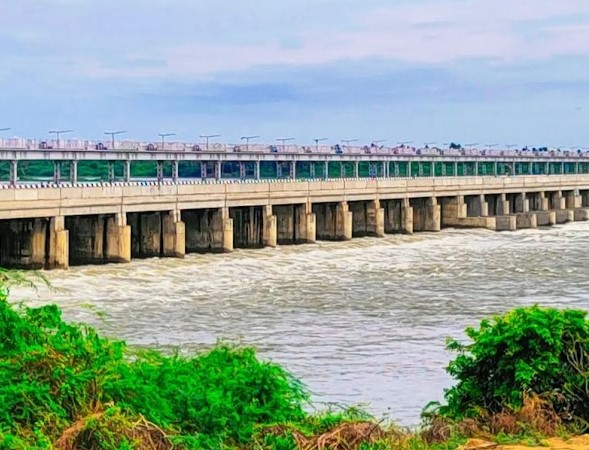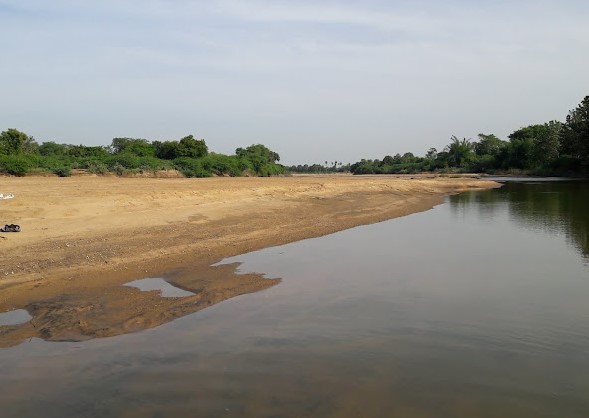- This is one of the 276 Devara Paadal Petra Shiva Sthalams and 65th Shiva Sthalam on the Southern bank of the river Cauvery in Chozha Nadu (Thenkarai).
- Lord Shiva in this temple is a Swayambumurthi (self-manifested). This is Goddess Mahalakshmi’s “Avathara” Sthalam.
- Siddhanatheswarar Temple is a Hindu Temple dedicated to Lord Shiva located at Thirunaraiyur in the outskirts of Nachiyar Koil in Kumbakonam Taluk in Thanjavur District of Tamil Nadu. Presiding Deity is called as Siddhanatheswarar / Vedeswarar / Ramanatha Swamy / Nareswarar and Mother is called as Azhagammai / Soundarya Nayaki / Parvathavarthini.
- The Temple is situated on the southern banks of Arasalaru River. The Temple is considered as one of the shrines of the 276 Paadal Petra Sthalams (Shiva Sthalams) glorified in the early mediaeval Thevaram poems by Tamil Saivite Nayanars Tirugnanasambandar and Sundarar. The Temple is considered as one of the 182nd Devaram Paadal Petra Shiva Sthalam and 65th sthalam on the south side of river Cauvery in Chozha Nadu.
- This west facing temple has two corridors and its main tower (Rajagopuram) has 5-tiers. The last consecration ceremony (Kumbabishekam) took place on 13.12.1999.This temple is believed to have been built by the Cholas.
- There are 24 stone inscriptions in this temple which date back to the periods of Rajaraja Cholan-I to Kulothungan-III.
- This temple is called “Siddheecharam”.
- The historical names of this place are Sidheeswaram, Suganthavanam, Narapuram, Kuberapuram and Brahmapuram.
PURANIC SIGNIFICANCE:
Birthplace of Maha Lakshmi
- According to legend, Sage Medhavi prayed to Lord Shiva, wishing for Mother Mahalakshmi to be born as his daughter. Lord Shiva then asked Lord Vishnu to grant this wish. In response, Mahalakshmi appeared on a lotus flower during the Panguni Uthira star day in March-April. Sage Medhavi named her Vanjula Devi, raised her, and eventually arranged her marriage to Lord Vishnu at the Thirunaraiyur Nambi Temple.
- Lord Shiva and Mother Parvati are said to have performed the wedding as her parents. The temple is revered as the birthplace of Maha Lakshmi, where her idol is depicted as a young girl, earning her the name Mazhalai Mahalakshmi (Mazhalai meaning infant). After the wedding, she is believed to have moved to the nearby Thirunaraiyur Nambi Temple in Nachiyar Kovil.
- In Tamil Nadu, it is customary for gifts (Seer) to be taken from the parental home to the in-laws' house during festivals like Diwali and Pongal. Following this tradition, silk sarees, bathing items (oil and soap nut powder), cooking pots (Pongal Panai), and jaggery are sent from this temple (her birthplace) to Thirunaraiyur Nambi Temple during these festivals. Additionally, Lord Shiva and Mother Ambika are said to visit Thirunaraiyur Nambi Temple the day after Vaikunda Ekadasi in December-January to see Mazhalai Mahalakshmi.
Siddhanatheswarar
Gorakkar, one of the 18 Siddhars, was afflicted by a curse from the Devas, resulting in a skin disease. Seeking relief, he came to this place and worshipped Lord Shiva, who granted him darshan and healed him. Consequently, Lord Shiva became known as Siddhanatheswarar, and the site is referred to as Siddeswaram. A relief depicting Gorakkar Siddhar worshipping Lord Shiva can be found on the temple walls. Other renowned Siddhars are also believed to have worshipped Lord Shiva here. Devotees suffering from skin diseases perform abhishekam (ritual bathing) with oil on full moon days and Fridays, using the oil as a remedy.
Naraiyur
According to legend, Sages Naran and Narayanan performed penance in this area. When Sage Durvasa visited them during their deep meditation and received no acknowledgment, he became enraged and cursed them to become cranes (Narai in Tamil). In their bird forms, they worshipped Lord Shiva, who eventually restored them to their original forms. The name Naraiyur is derived from this legend, and a beautiful relief depicting Naran and Narayanan worshipping Lord Shiva can be seen on the temple walls.
Relief from Diseases
A merchant named Chitra Gupta once suffered from an incurable ailment. It is believed that he consumed a small portion of the oil used for performing abhishekam to Lord Shiva and was miraculously cured. Consequently, it is believed that performing abhishekam and consuming the abhisheka oil can cure various skin diseases.
Worship by Divine Beings
Many divine beings, including Murugan, Brahma, Vishnu, Kubera, Sage Markandeya, Sage Durvasa, Arjuna, Gandharvas, Siddhars, Appar, Sundarar, and Thirugnanasambanthar, are said to have worshipped Lord Shiva at this site.
Other Names of This Place
The area has been known by various names, including Siddheeswaram, Sugantha Vanam, Narapuram, Kuberapuram, and Brahmapuram.
ADMINISTRATION:
This temple is under the administrative control of the Hindu Religious and Charitable Endowments Department of Government of Tamil Nadu (HR&CE).
22e146.jpg)

